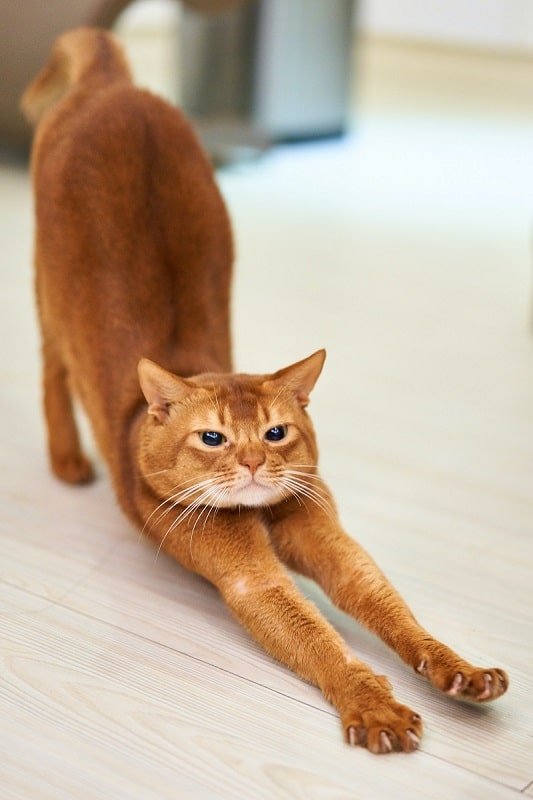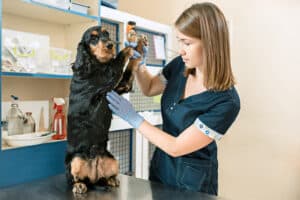Are you worried about the risks of using Bravecto for your cat’s tick and flea problem? It’s crucial to note that while this medication can be highly effective, it has been linked with some side effects.
Our comprehensive guide sheds light on everything you need to know about Bravecto for cats’ side effects, warnings, and adverse reactions to dosage recommendations. Ready? There’s a lot you might not expect!
What Is Bravecto for Cats?
Table of Contents
- 1 What Is Bravecto for Cats?
- 2 Bravecto for Cats Warning
- 3 What Are the Adverse Reactions & Side Effects on Bravecto for Cats?
- 4 Do You Need a Prescription for Bravecto for Cats?
- 5 What Is the Recommended Dosage?
- 6 What Should You Consider Before Giving Your Cat Bravecto?
- 7 What Happens if Your Cat Licks Bravecto?
- 8 Can I Pet My Cat After Applying Bravecto?
- 9 Can Bravecto for Dogs Be Given to Cats?
Bravecto for cats is a robust and effective flea control product veterinarians prescribe. A staple in cat healthcare, it’s designed to protect your feline friends from nasty parasites for up to 12 weeks with just one treatment.
This potent solution falls within the medication class of isoxazoline, which has been recognized for its strong efficacy against fleas and ticks. However, this efficiency comes with a caveat; some adverse reactions like tremors, ataxia, and seizures have been associated with this drug group, as indicated by the FDA warning issued in 2019.
The main active ingredient in Bravecto is Fluralaner. This insecticide interferes with the nervous system of insects resulting in their death. Still, it can cause side effects such as vomiting or diarrhea in our furry companions if not tolerated well.
Signs of flea medication toxicity can include muscle tremors and excess drooling. More common signs of toxicity are vomiting, diarrhea, labored breathing, dilated pupils, advanced muscle tremors, nausea, weakness standing or walking, and over-production of saliva. While mild reactions to pyrethrum-based products in your pet are normal, any worrying side effects should immediately be reported to your veterinarian.
Bravecto for Cats Warning
The use of Bravecto for cats is linked to several warnings issued by the FDA and concerned pet owners. The FDA has stated that neurologic adverse events, such as tremors, loss of coordination (ataxia), and seizures are possible with this medication.
This Bravecto for cats warning applies not only to cats but also extends to dogs treated with flea and tick medications like Bravecto.
This potential for serious side effects has resulted in mixed reviews about the safety of Bravecto for cats. Some cat owners have reported acute symptoms relating to their pets’ nervous system after using this treatment; these include hypersalivation, twitching muscles, uncontrollable bladder actions, tremors, and even ataxia.
What Are the Adverse Reactions & Side Effects on Bravecto for Cats?
Typical Bravecto for cats’ side effects observed include nausea, itchy skin, vomiting, loss of appetite, diarrhea, lethargy, and dermatological conditions such as hair loss or the appearance of lesions or scabs.
These symptoms align with those listed on the medication leaflet accompanying this product. If you’re wondering how long Bravecto side effects last in cats, the majority last between two and six hours.
Cats with a history of seizures should be carefully monitored when given Bravecto for cats since this drug belongs to a class associated with neurologic adverse reactions, including tremors and ataxia.
Rare instances during clinical trials indicated some cats might experience an allergic reaction to Fluralaner — the active ingredient in Bravecto.
Do You Need a Prescription for Bravecto for Cats?
To purchase Bravecto for cats, you will need a prescription from your veterinarian. This is because Bravecto is a powerful medication that requires professional guidance to ensure it is administered correctly and safely.
The active ingredient in Bravecto, known as fluralaner, belongs to the isoxazoline class of drugs associated with potential neurological adverse reactions in some animals, such as muscle tremors and seizures.
Therefore, it’s crucial to consult with your vet before using this product on your furry friend.
What Is the Recommended Dosage?
To keep your cat protected against fleas and ticks, it’s essential to understand the recommended dosage of Bravecto for cats. This topical solution comes pre-dosed in single-use tubes, making it easy to administer.
The dosage schedule calls for a minimum dose of 18.2 mg/lb (40 mg/kg) for cats, ensuring they receive the right amount to combat these pesky parasites effectively.
Unlike other flea and tick treatments requiring a monthly application, Bravecto for cats must only be administered once every 12 weeks. This means you can rest easy knowing your furry friend is protected for an extended period with just one application.
What Should You Consider Before Giving Your Cat Bravecto?
First and foremost, it’s crucial to consult with your veterinarian. They can guide whether Bravecto is the right choice for your cat, considering their age, health condition, and any other medications they may be taking.
Additionally, it’s essential to understand the potential Bravecto for cats side effects.
While most side effects are mild and temporary, such as itching or gastrointestinal issues like vomiting and diarrhea, more serious adverse reactions have been reported in rare cases.
These can include hair loss, decreased appetite, lethargy, or even neurologic events in dogs and cats treated with flea and tick products like Bravecto.
What Happens if Your Cat Licks Bravecto?
If your cat licks Bravecto, it may experience a temporary and normal reaction called transient hypersalivation. This occurs when the bitter taste of the product causes excessive drooling in cats.
It’s important to note that this hypersalivation should last up to 12-24 hours. While seeing your cat drooling excessively can be concerning, this is a quick response and not something to be overly worried about.
However, if you notice any other unusual symptoms or if the hypersalivation persists for more than 24 hours, it is recommended to seek immediate veterinary attention.
Can I Pet My Cat After Applying Bravecto?
After applying Bravecto to your cat, it is best to avoid petting them briefly. The medication needs time to dry and fully absorb into the skin. If you touch or pet your cat too soon after application, there’s a chance that the product may transfer onto your hands or clothes.
While Bravecto is generally safe for pets, washing your hands thoroughly after handling any kind of flea and tick treatment is always a good idea.
Bravecto is designed to work topically on cats and should not be ingested by either humans or other animals. By waiting until the product has dried completely, you can ensure that it remains effective in protecting against fleas and ticks without any unwanted transference.

Can Bravecto for Dogs Be Given to Cats?
Bravecto is explicitly intended for dogs and cats, and each formulation is designed to meet the specific needs of each species. Therefore, using Bravecto for cats on your feline friend is essential.
While Bravecto for dogs may seem similar, the ingredients in Bravecto are different for dogs and cats.
Using a product intended for dogs on your cat can be extremely dangerous and potentially harmful to their health. It’s crucial always to follow the instructions provided by your veterinarian and use the correct product for your pet.
Giving your cat Bravecto for dogs can lead to severe adverse reactions such as vomiting, diarrhea, or even neurological issues.








